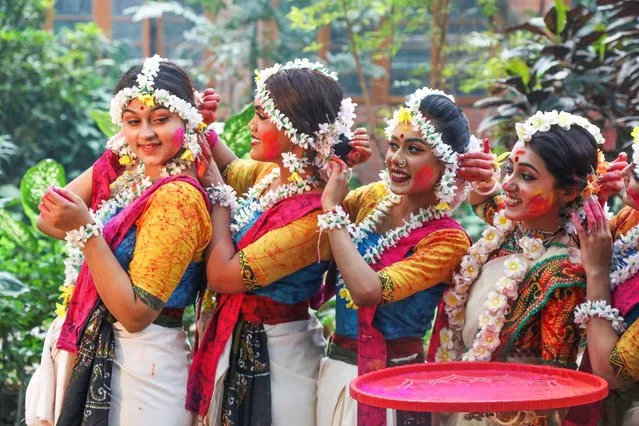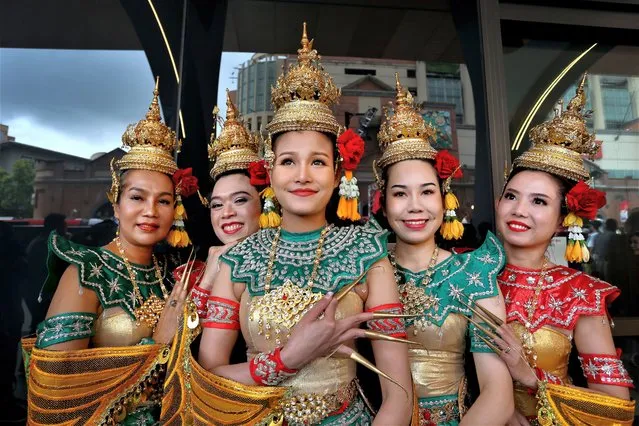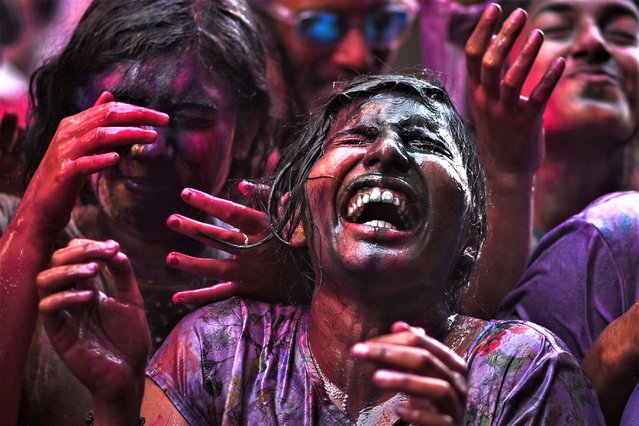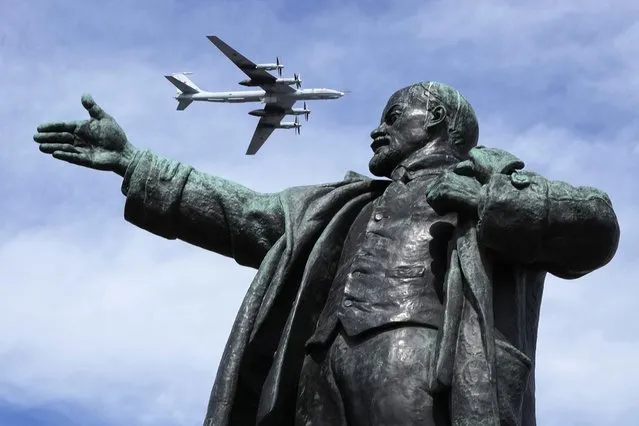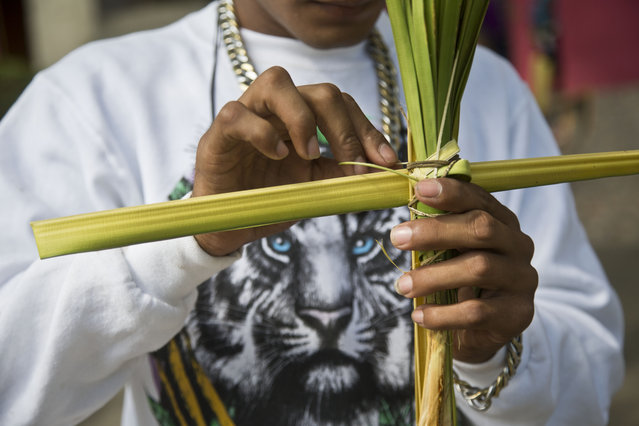
A young man weaves palm fronds into the shape of a cross before the start of a Mass to observe Palm Sunday, at the Metropolitan Cathedral, in Managua, Nicaragua, Sunday, March 29, 2015. For Christians, Palm Sunday marks the start of Holy Week ahead of Easter, commemorating Jesus Christ's entrance into Jerusalem, when his followers laid palm branches in his path. (Photo by Esteban Felix/AP Photo)
30 Mar 2015 13:16:00,post received
0 comments




